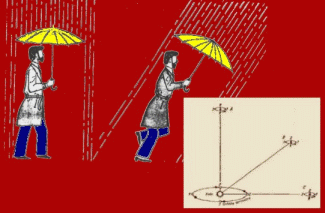Eustachio Manfredi (continued)
Manfredi’s major works include the Effemeridi Bolognesi (i.e. Bolognese Astronomical Almanac), which contained tables of the planets, the satellites of Jupiter and conjunctions of the moon, as well as tables and maps of eclipses of the sun. For many decades these were considered amongst the best in Europe.
During this period Manfredi,
with the help of his two sisters, began a series of observations to verify the presence
of shifts in the positions of the stars, which would allow him to measure the "parallax"
of the stars and thus confirm that the Earth moves around the Sun.
In fact, in those days there was still a debate over the question of
the heliocentric and geocentric systems.
In the same year (1729) that Manfredi published his first results, the Englishman James
Bradley provided the correct explanation for these small shifts which had been observed.
They were subsequently called the "annual aberration of the stars", after the title of
Manfredi’s work, De annuis inerrantium stellarum aberrationibus.
 |
The phenomenon is due to the combination of the orbital motion of the Earth with the finite speed of the light coming from the stars, which produces an apparent shift in the position of the stars. It is basically the same phenomenon which forces us to tilt our umbrella while we run in the rain, since we must combine our speed with the direction of the rainfall. (See fig. left).
Two years later, in the first volume of Commentaries of the Science Academy, Manfredi published a work of importance in which, firstly, he confirmed the validity of Bradley’s hypothesis but, because of the local political and religious situation (Bologna was the Church State), he could not express a view which tied him too closely to the heliocentric hypothesis.
In any case, these were the first observed confirmations of the motion of the Earth around the Sun and, in fact, a few years later in 1757 the "Holy Congregation of the Index" allowed the free circulation of the « libri omnes docentes immobilitatem Solis et mobilitatem Terrae ».
A case which had lasted centuries could finally be closed and Manfredi, from the Bologna Observatory, had made an important contribution to its ending.
|
|
(Eustachio Manfredi - page 4 of 4)
< Back | |
